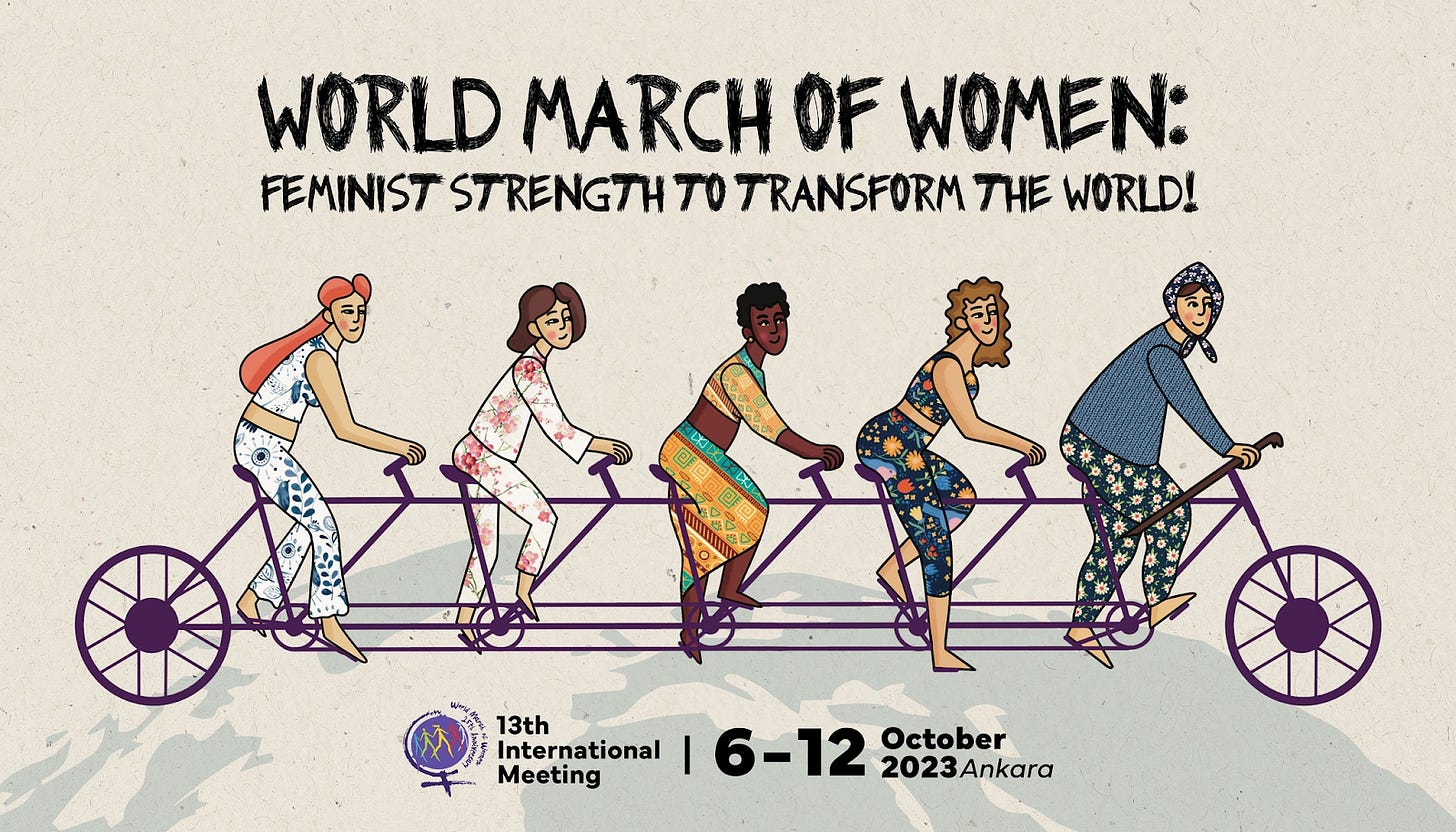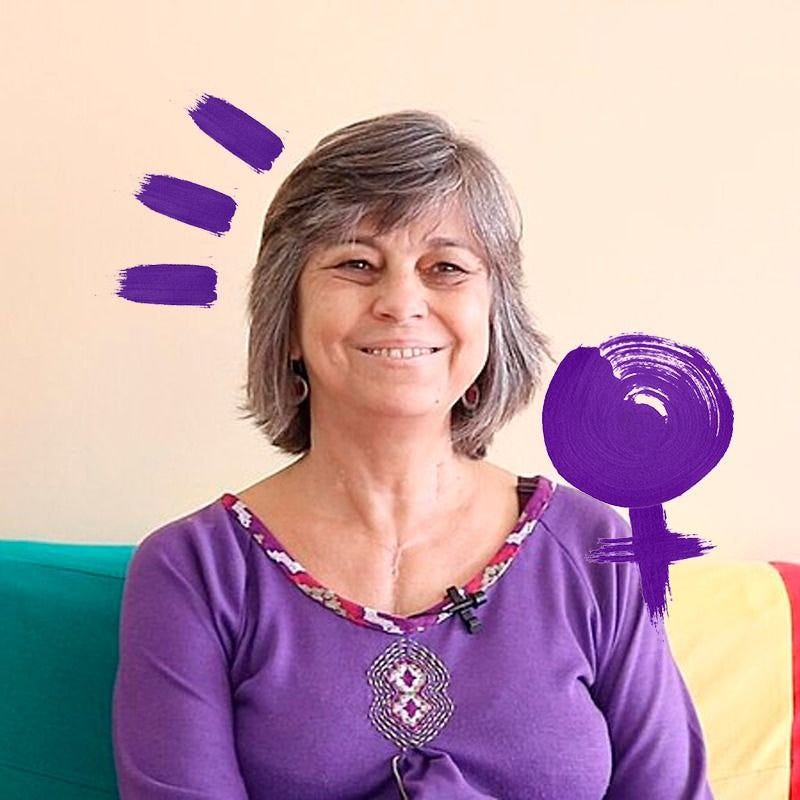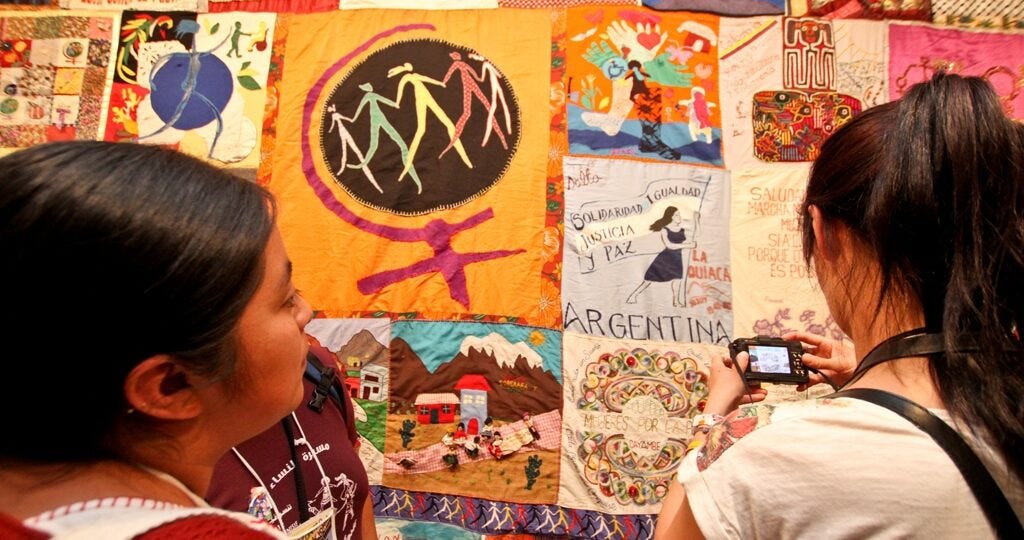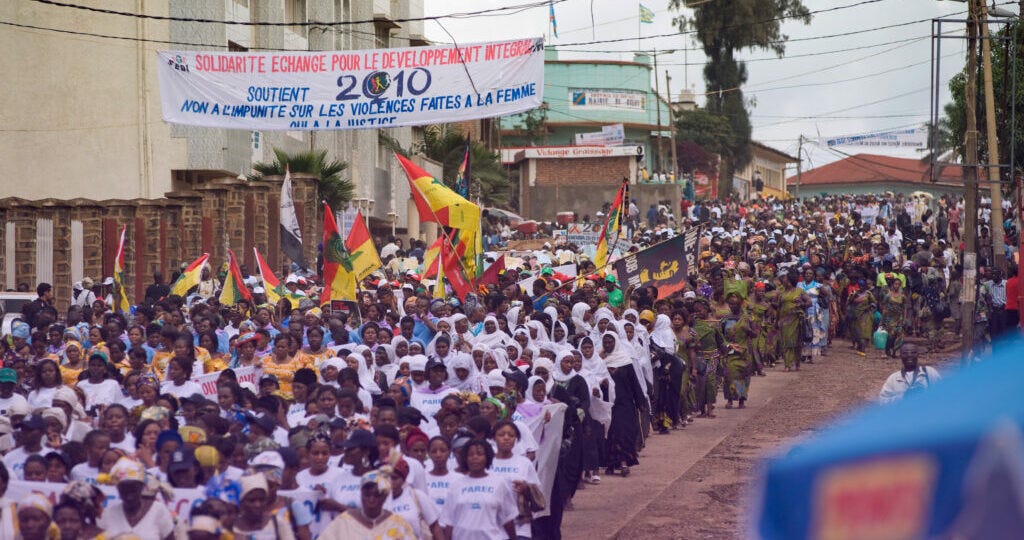Special Issue | 13th International Meeting of the World March of Women
[Si desea recibir el boletín en español, haga clic aquí. Si vous désirez recevoir le bulletin en français, cliquez ici. Se deseja receber o boletim em português, clique aqui]
Special Issue | 13th International Meeting of the World March of Women
Hello, sisters of the world!
On October 7, the 13th International Meeting of the World March of Women began. Until October 12th, feminist organizers from around the world will meet in Ankara, Turkey under the slogan “World March of Women: Feminist Strength to Transform the World!”. The organization is also celebrating its 25th anniversary, commemorating a quarter-century of feminist action and international solidarity.
The 13th IM will be attended by over 100 National Coordinating Body (NCB) delegates from 62 countries internationally. This meeting, which occurs every two years, acts as a general assembly and decision-making structure for the World March of Women. The IM provides an important opportunity to strengthen the movement by sharing struggles as women and engaging in collective discussion and analysis incorporating diverse international perspectives.
The meeting started at a difficult time: the day before the activities began, Nalu Faria, a Brazilian feminist activist who was fundamental to the organization of the World March of Women, died. At the end of 2020, after the International Action of the WMW, Nalu was one of the comrades who, with courage and inspiration, proposed the creation of a portal to disseminate the ideas and actions of international feminism. Without Nalu, there would be no Capire. In the same way, the World March of Women is what it is thanks to the persistence, work, and dreams of Nalu and her comrades. The International Meeting followed, with sadness, but also with great pride in Nalu, paying tribute to her and honoring her revolutionary spirit in every debate.
We have published articles in recent weeks at Capire about the history, the memories, and accumulated wisdom from the WMW struggles over the years, looking back on processes, reflections, and mobilizations that have marked the organization. The first article looks back on the political and material seams of the Solidarity Quilt, sewed by many hands. In 2005, for the movement’s 2nd International Action, the so-called Solidarity Quilt passed through the hands of women from all continents, as they added pieces of fabric that represented their struggles in 63 countries and territories. The Solidarity Quilt played a symbolic role: it represented the union of women around a feminist political project, expressed that same year in the World Letter from Women to Humanity, which traveled with the Quilt and was launched on March 8 that year, in São Paulo, Brazil. Peace, freedom, justice, solidarity, and equality were the five pillar values of the Letter. The article provides us an understanding of the process of sewing the quilt and pictures of the action.
In 2010, during the closing activity of the 3rd WMW International Action, a Great March for Peace was held in Bukavu, Democratic Republic of Congo. One of the goals of the 3rd Action was to draw attention to the violence experienced by women in territories ravaged by war and armed conflicts, presenting its causes. The actions showed that sexist violence is not simply a collateral damage of militarization, but a fundamental mechanism of capitalism, racism, and colonialism. In conflicts, rape is weaponized, and women are deemed spoils of war. That year, the World March of Women reinforced its denunciation of the impacts of militarization in the peoples’ everyday lives, also presenting feminist alternatives for peace. The article allows us to understand how the choice was made to carry out this international mobilization in Bukavu and how the struggles against militarization and violence against women are happening today.
There are so many reflections that have changed the World March of Women and its struggle over the years. In this sense, we have also published an article about how the WMW has advanced its proposal for feminist economy, a political bid to change the world and women’s lives. Since its origins, the movement’s militants saw that it was necessary to further develop shared feminist views on the economy. By articulating theory, practice, and movement, in the World March of Women, feminist economy is much more than a set of concepts applied to explain the economy: it is a strategy to face racist and patriarchal capitalism and build societies based on the sustainability of life. In the article, we look back on some of the milestones of the process that has built this political vision and point out some of the challenges of the current context.
Every political action depends on its militants’ ability to collective organize, working together for the world that we want. In this regard, we have published an article by Carmen Díaz, a militant with the World March of Women Mexico, based on her participation in the International Feminist Organizing School (IFOS). In the writing, Carmen Díaz introduces the relevance of the notion of political subject for the feminist movement. She explains that, To build a political subject, we must go from the individual to the collective, building agreements together. This does not just mean expressing our opposition to the capitalist system—it is not enough to say “damn patriarchy” or “death to companies” without taking action. We must do something about it, collectively. In this process, we play the major role in our own history.”
The decisions about the International Actions of the World March of Women are made during International Meetings. In this edition that starts today, it will be no different. In the following days, women will hold activities and decide on the 6th International Action, to be held over the course of 2025. Moreover, these Meetings are important moments for the WMW in terms of organization and joint efforts, updating discussions, agreements, and agendas. Here we look back on the gallery Living Memory: the International Meetings of the World March of Women, with pictures from all International Meetings held to this day.
As we build political subjects, learning our history, our memory, our legacy, and our predecessors is essential to radicalize our actions in the present. This is why, during this WMW International Meeting, we invite you to read these articles and many others available at Capire. Read more:
::: Solidarity Quilt, an Internationalist Feminist Experience in 2005
The story of the feminist quilt that traveled across countries and continents with women’s artwork and messages | Experience
::: Great Peace March, an International Action in Africa in 2010
The experience and lessons drawn from the closing event of the 3rd International Action of the World March of Women | Experience
::: Feminist Economy as a Political Tool for the World March of Women
The WMW’s history of struggle against poverty and violence and the fight in the conflict of capital against life | Analysis
::: What Does It Mean To Build a Feminist Political Subject?
Taking part in the Feminist School (IFOS), Carmen Díaz introduces the relevance of the notion of political subject for the feminist movement | Analysis
::: Living Memory: The World March of Women International Meetings
See in this gallery pictures and experiences of the World March of Women | Galery
Share this email! Sign up to our newsletter and follow us on social media (@capiremov). We need everyone's support to promote and expand the Capire portal!
Newsletter | WhatsApp | Telegram | info@capiremov.org
Facebook | Twitter | Instagram | YouTube | Spotify











